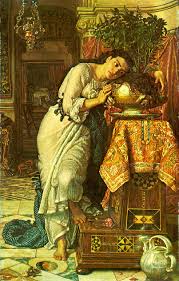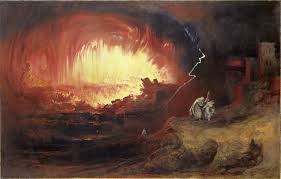 At the
At the 
This was one of those questions that appear obvious until you have to actually answer them. The best I could come up with, under his polite scrutiny, was that as a culture we in the West value highly the original object itself, almost to the point of iconography. Talking later to a friend and colleague from my book dealing days confirmed this idea. Collectors value a first edition of a book over a later identical or even better edition. The only other theory I could come up with was the idea of originality. We value the object, the painting itself as a tangible thing, because until Hunt laid down his brushes, it never existed before. There may be earlier pictures on the same subject but this one, as Betjeman puts it, ‘interprets his age in a way so pleasing to ours’ and so we value it, so much so that we place a barrier before it and stop viewers from even touching it.* We must stand at a respectful distance and worship. My companion heard me out but I’m not sure I persuaded him that we’re right in our attitudes. But then I did not entirely persuade myself. And as it happens, I prefer the John Martin’s The Destruction of Sodom & Gomorrah anyway.

You have to admit, it is livelier.
*Very impressive attendant at the gallery who explained to my companion why visitors are asked not to touch the pictures with both great politeness and unpatronising reasons.


No comments:
Post a Comment